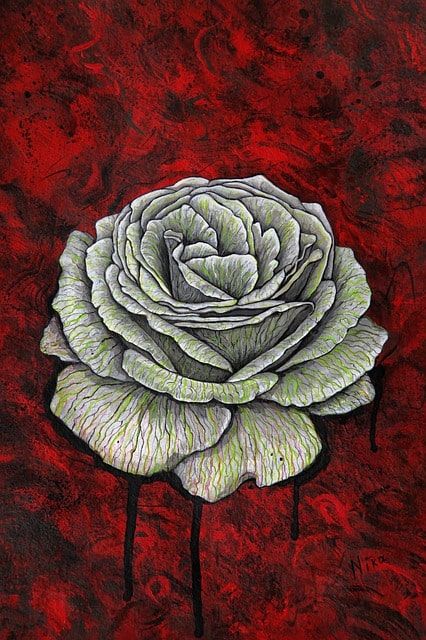Speaking of Fine Arts... Let's talk about art...
In former times the liberal arts were not only those now called fine arts, but any professions that did not involve mechanical practices then abandoned to the serfs, the manual, sordid arts.

The meaning of 'deceit', 'fraud' attributed to the word arte was very common in the Middle Ages (in Count Lucanor, sin arte is read as 'without felony, without trick'); in the past, the liberal arts were not only those now called fine arts, but any profession that did not involve mechanical practices, then abandoned to the serfs, the manual arts, sordid. The negative derivatives artero, for 'cheat', 'traitor', and artería, for 'deceit', 'fraud', have fallen into relative disuse; the Italian word artesano is the name of one who dedicates himself to a manual activity, to craftsmanship; artista is applied to one who does what he does with perfection; in the past artizar was 'to do with art, with skill', and artizado was one who knew a certain art; long before (12th century) it was 'to bewitch', 'to enchant' and then 'to beguile'; from the Latin iners, with the prefix in- privative, 'without art', we have inert, 'without capacity', 'without talent', or 'without virtue', 'without strength', that is 'inactive', 'inert' and, from here, inertia.
That which is 'made with art', arte factus in Latin, is an artifact, and the one who makes it is an artifice (from the Latin artifex); in a less laudatory sense we have artifice (artificium in Latin) and the adjective artificial, and artificioso, artificiar and artificiero, all voices that imply lack of naturalness or spontaneity, affectation, and even deceit; derogatory of artifice is artilugio, with the unusual meaning of 'duplicity, dissimulation, cunning', and the current one of 'device made without perfection or in a provisional way', flimsy, it is a word composed of ars ('art' in Latin) and lugere ('to cry', also Latin) the first meaning was that of 'pretended crying', and the second sense is a probable cross with artefacto and artifice. From arte and maña (from the Vulgar Latin mania, 'manual skill', from manu, 'hand') we compose artimaña, 'trick to deceive' (I am not convinced by the attempts to bring artimaña from magical art or magna arte, although there is no lack of texts that attribute a respectful meaning to this voice).
The broadest meaning of the word arte is 'rule to do anything well'. The word comes from the Latin artem, accusative of ars, artis, 'primor', 'perfection', 'skill', 'dexterity', 'ability', 'cunning', 'ruse', according to the contexts: ars armorum, 'of arms', for Quintilian was the art of war; parasitica, 'of the parasite', described Plautus as the art of the flatterer; the lucrative talent was, according to Martial, ars pecuniosa; Cicero sentences: Notatio naturae peperit artem, 'the observation of nature engendered art', and Pliny calls the 'choir of muses' artium chorus; it also meant 'practice' and 'instruction'.
If we trace art back to its root ar, which denotes 'fit', 'joint', we will find that it is related to weapon and to the article (from the diminutive of the Latin artus, 'joint', akin to the Greek árthron, with the same meaning); in effect, what is armed, assembled, joined, articulated, is what is artistic, what is well done.
Art can be confused with science (knowledge) since it is the art of reasoning, that is, dialectics (from the Greek dialektiké, implied techné, feminine of dialektikós, 'relating to the discussion'); in fact, it is identified with technique (from the Greek techné, 'art'); poetry (from the Greek poíesis, 'creation', 'production') is to a certain extent art, but a delirious inspiration (from the Latin delirare, 'to deliriate', 'to go out of the groove', de(s) 'out', and lira, 'groove') is also indispensable to it; the judicative arts, of judgment, are critical and the gnostic, and the dispositive, the epitactic or spistatic (the first discursive, deliberate, the second normative, orderly); the ensemble of all the arts (of all the techniques) constitutes culture; culture is the overcoming, if that is possible, of nature (and I repeat: what is not nature is culture), thanks to technique, that is, the arts.
Philosophy has subtracted from the sphere of art the sphere of science, since the latter is a necessity (in the sense of 'what cannot be different from what is'), and divided possibility ('what can be in one way or another') into action and production, and thus typifies the object of art, as 'the possible that is the object of production', and with such a criterion the fine arts -also according to Kant- become representations that have their finality in themselves and therefore offer a disinterested pleasure, and here is where we fall into the domain of aesthetics.
It was Alexander Gottlieb Baumgarten who, around 1750, introduced the name in his book Aesthetica seu scientia cognitionis sensitivae (it is the Latin form of the Greek aisthetiké, feminine of the adjective aisthetikós, 'relating to sensory perception', from the verb aisthánesthai, 'to perceive'); this assignment of art to the sphere of sensibility is a readoption of the Platonic thesis that had confined art to sensible appearance and characterized it by the renunciation of leaving this sphere through the use of calculation and measurement; But in Baumgarten, the notion of art as sensibility excludes such confinement, because art appears as the perfection of sensibility itself; the concept of taste is then born and elaborated (and the category of feeling is also born and elaborated) with which the new appreciation of the sensible sphere is conditioned.
By Arrigo Coen Anitúa




